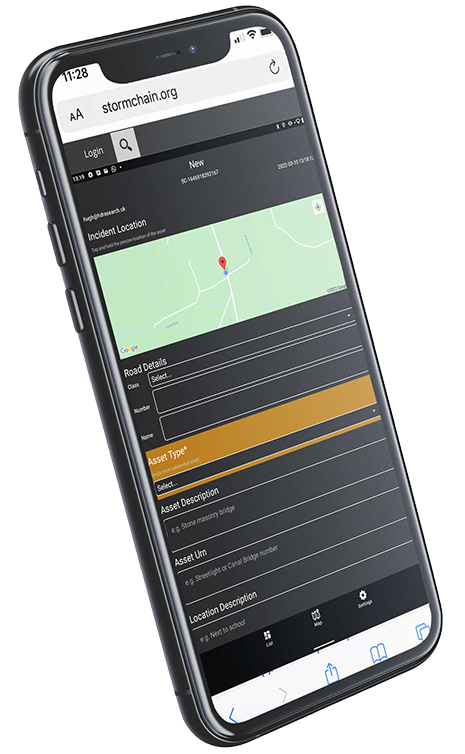
Through its use of desktop mapping and formatted reports the system provides unparalleled situational awareness for highway managers. Designed for and tested in low/no signal areas Stormchain offers a resilient rapid impact assessment solution for highway managers experiencing their ‘worst day’. Impact assessment of this type directly informs and complements the development of risk-based repair and recovery processes.
Stormchain was conceived following three devastating storms striking the UK. During the debriefing of the national response to Storms Desmond, Eva and Frank, it was discovered that no consistent process existed for carrying out the Rapid Impact Assessment (RIA) of highway assets.
The fact that only ad hoc approaches had been used to undertake the inspection of such important ‘lifeline’ infrastructure, made it difficult to understand the relative impacts across scales.
Whether that was a local authority needing to manage access to communities isolated by the failure of critical local assets, or nationally with Ministers unable to understand relative damage across the nation, this lack of consistency was found to have hindered effective response.
Stormchain was developed to provide the state-of-the-art answer to this lack of consistency.
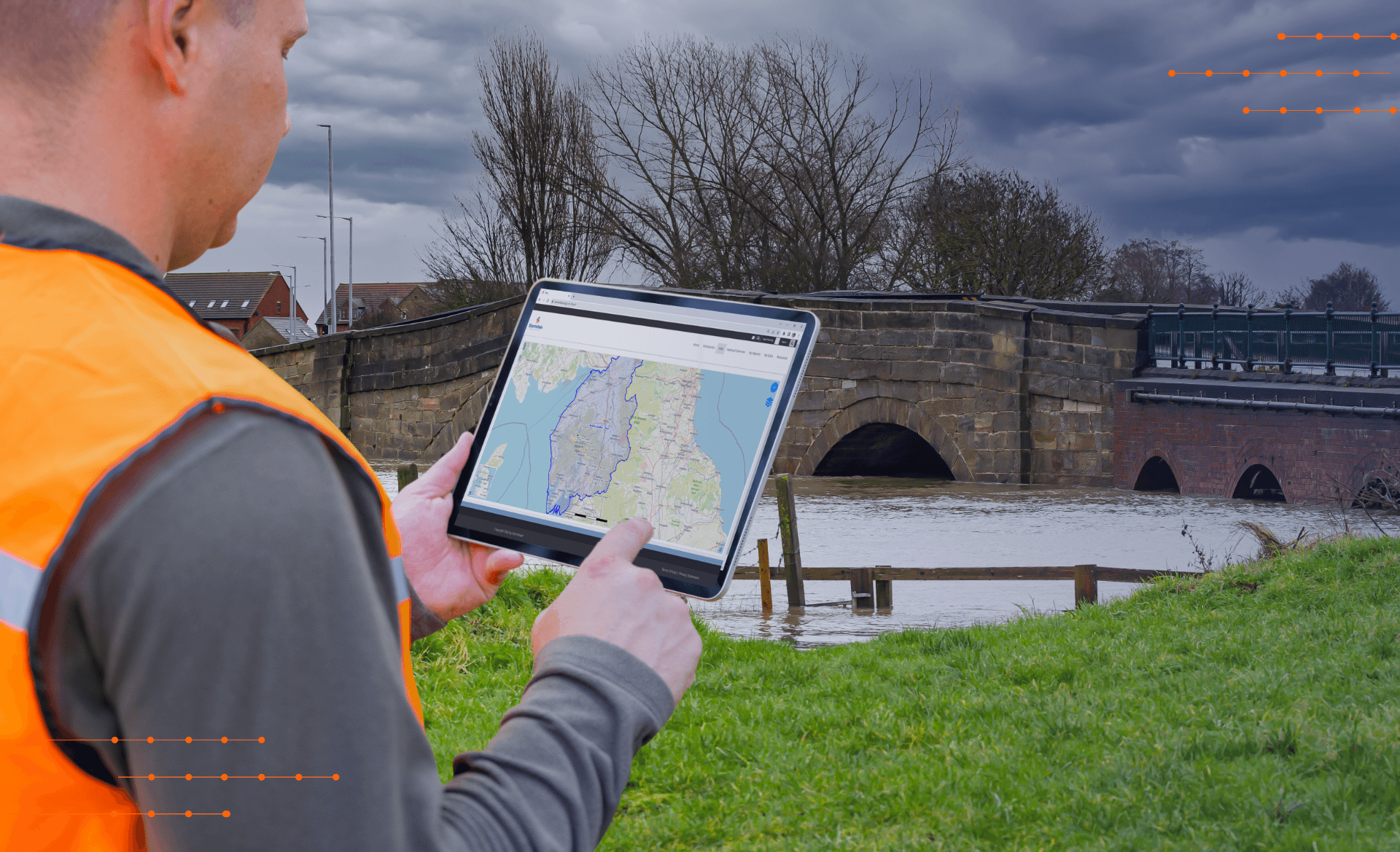
Stormchain supports Business-as-Usual impact reporting, which builds ‘muscle memory’ in your teams. This means that when emergencies occur, you will be ready
Stormchain supports dynamic ‘when I know, you know’ reporting—from your field operatives to operations managers. It provides unparalleled situational awareness across your team
Stormchain’s ‘one-truth’ incident dataset underpins risk-based recovery, providing substantive evidence to support cost recharge at the touch of a button.
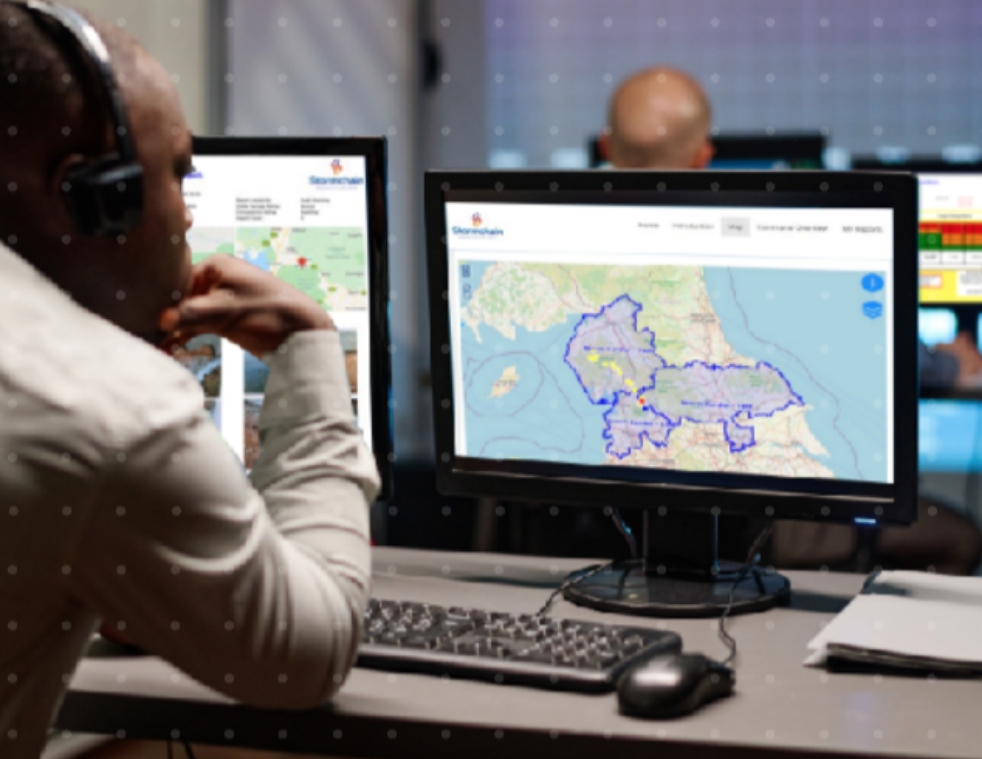
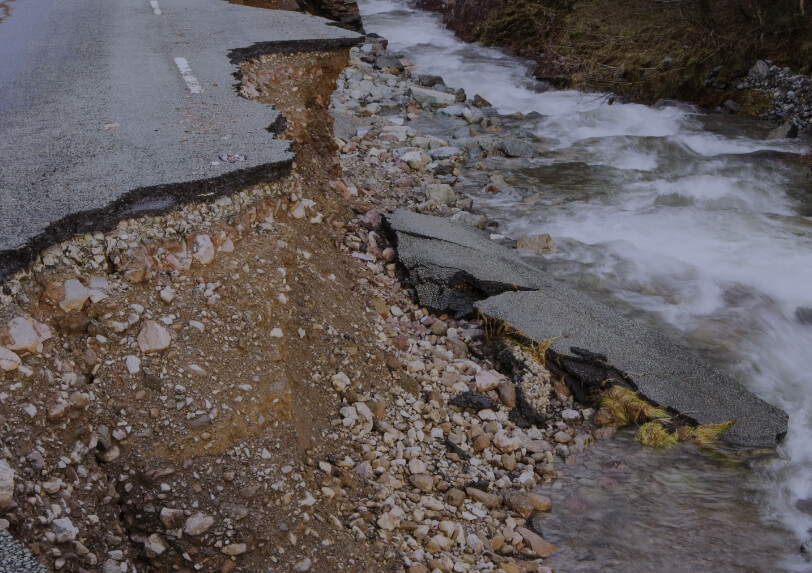
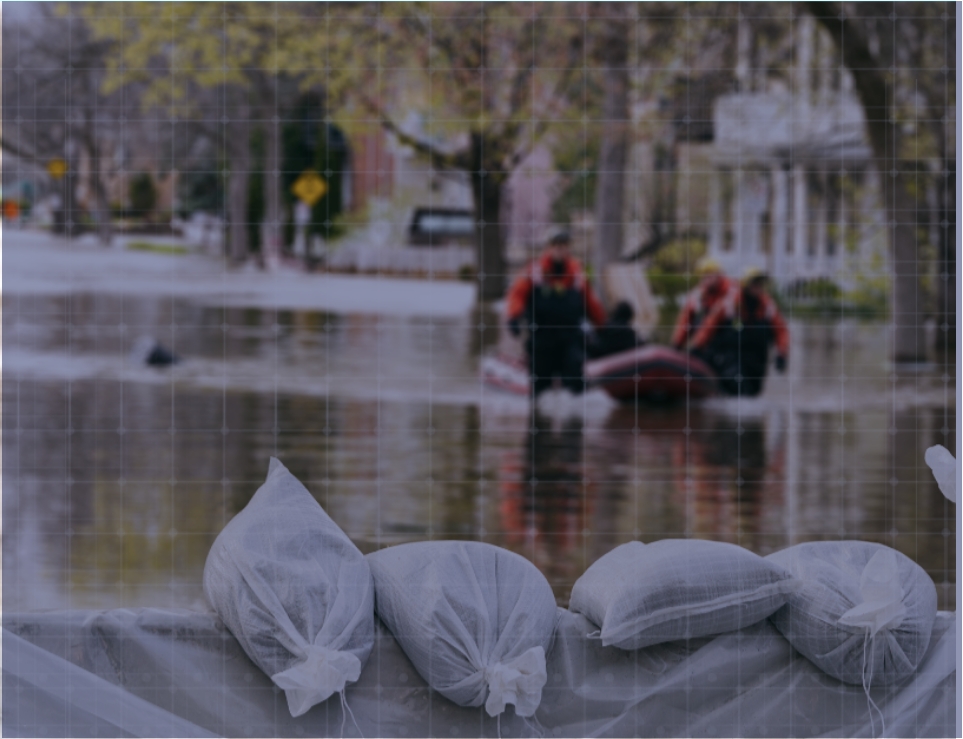
Stormchain represents the state-of-the-art in terms of highway-asset Rapid Impact Assessment (RIA) Stormchain is specifically designed to meet the needs of highway operators, to rapidly understand the impact of incidents and emergencies on their networks.
Whether caused by a natural hazard (e.g., floods, storms, wildfire, drought), a major accident, or a malicious act, Stormchain provides a new level of the situational awareness that is so vital for understanding an event’s implications for network management.
In Stormchain, Impact = Damage x Consequences
This means that Stormchain directly informs, not just the nature of asset damage, but also accounts for the consequences of that damaged asset on the affected community. This means that Stormchain directly supports risk-based asset management and risk-based recovery approaches.
To do this, Stormchain creates and supports a ‘one truth’ dataset, which allows you to effectively initiate and monitor the stabilisation and restoration of assets following damage, from the initial RIA to the final repair.
Stormchain supports the easy auditing of event-related data to inform response and recovery grant applications.
Stormchain’s embedded technology means that it can offer unparalleled interoperability and “when I know, you know” situational awareness during emergencies for both highway operators and their partner agencies.
Stormchain’s formatted Situation Reports provide time-stamped information directly to defined audiences, including the potential to report directly to Ministerial level.
Stormchain provides the platform for delivering consistent highway impacts reporting from local to national scales. Stormchain provides responders with unparalleled situational awareness of highway impacts.
Stormchain is a web-based Geographical Information System (GIS) application that receives data from the field via a mobile App and aggregates it to create a ‘one-truth’ dataset within its GIS. This dataset then provides unparalleled situational awareness of highway impacts through the use of mapping and formatted reports.
Stormchain operates under the principle that Impact = Damage x Consequences
As such the Rapid Impact Assessment process is built around in-field (damage assessment) and in-office (consequence assessment) elements.
Working in the field is hazardous, so from a safety perspective, a Dynamic Risk Assessment forms the initial element of each assessment: so, you know your operators are as safe as possible.
Using the mobile device (phone or tablet), the operator then completes a set procedure for the visible damage assessment of each asset.
This procedure involves the operator answering a consistent set “20 questions” for each asset inspected. This provides the precise geo-location of the asset, a description of asset type and the damage it has sustained. Any measures required to make the asset safe and any need for diversions are also logged and images can then be attached, to provide photographic evidence of the asset damage. Finally, a damage rating is applied.
Once the damage assessment is complete, the data is uploaded to the system’s Cloud Server via a 3G or 4G signal. If the device is out of signal, the App will store the data until a signal is reacquired.
This level of dynamic system updating means that the RIA Manager is always in possession of assessment data either instantly the assessment is completed, or as soon as possible afterward. This ‘When I know, you know’ information handling represents a first in the sector capability in respect to creating and maintaining ‘shared situational awareness’ (one of the five JESIP Principles which underpin the delivery of Integrated Emergency Management in the UK).
Once in the system, the RIA manager validates the Damage rating and applies a Consequences rating to the record. This ‘Asset within Network’ consequences rating takes into account all information about the likely effects this damaged asset will have on the network and any affected community. For example, if a washed-out culvert is effectively cutting off access for a community or to a critical infrastructure facility then the appropriate consequence rating would be Extreme. Whereas if a similar wash-out occurred in a location that was easily by-passed the rating would be much lower.
With both Damage and Consequences rated, Stormchain then combines these values into an impact matrix, which provides both a numerical ‘score’ and a visible illustration of the magnitude of impact each damaged asset is having on the network.
Impact assessment of this type directly informs and complements the development of risk-based repair and recovery processes.
By creating a Unique Reference Number (URN) for each damaged asset, Stormchain also supports a ‘one truth’ approach to recovery management, where all work on an asset can be audited ‘from RIA to reopening’: this level of information management can be used to directly inform repair grant applications and other network management processes.
Created on an open-source platform, to reduce commercial dependency, the system was built from the start to meet a key principle of Integrated Emergency Management (IEM). That is that you should not expect people ‘to need to learn new things on their worst day’.
Under this principle, Stormchain allows complete interoperability between itself and other GIS systems through the use of internationally standardised OGC/WFS/WMS data protocols. This means that an RIA Manager can share highway impact data dynamically with partner agencies via a simple URL. Through this approach, partners can directly assess the effects of highway impacts on their own networks, and work collaboratively to mitigate those impacts, using their own ‘business as usual’ systems, without ever needing to learn how Stormchain itself works.
Stormchain was conceived following the three devastating storms that struck the UK in December 2015. During the debriefing of the national response to Storms Desmond, Eva and Frank, it was discovered that no consistent process existed for carrying out the Rapid Impact Assessment (RIA) of highway assets.
The fact that only ad hoc approaches were used to undertake the inspection of such important ‘community lifeline’ infrastructure, made it difficult to understand the relative impacts across scales.
Whether that was a local authority needing to manage access to communities isolated by the failure of critical local assets, or nationally with Ministers unable to understand relative damage across the nation, this lack of consistency was found to have hindered effective response.
Stormchain was developed to provide the state-of-the-art answer to this lack of consistency.
By providing a consistent approach to post-disaster highway RIA, Stormchain also intersects with the Sendai Framework for Disaster Risk Reduction, as its creation directly contributes to the recognised global priority for the development of such systems.
To explore how we may be able to work together to solve some of your challenges.